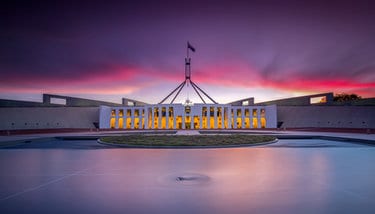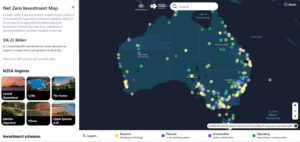
Last night’s change of Liberal Party leadership and the elevation of new Prime Minister, Malcom Turnbull, is likely to have a range of implications for Australian climate policy. We examine these below, with a focus on the short-term negotiation of the Safeguard Rules with the Senate crossbench, and the formation of long-term policy in the lead up to next year’s federal election.
While the left may be craving immediate reform on climate change, no policy review is likely to occur over the short-term, with Mr Turnbull publicly supporting Direct Action and the government’s new 2030 emissions reduction target. The maintaining of the status quo is designed to head off concern from the conservative right within Liberal party room, which remains cautious of any carbon pricing regime.
While Direct Action will remain the cornerstone of the Coalition’s climate policy, ongoing consultation over the newly released Safeguard Mechanism draft rules is likely to provide the first opportunity for any policy adjustment, while providing political coverage via crossbench negotiations. The short-game: Implications for Safeguard Mechanism rules As we reported last week, the leniency of the newly released ERF Safeguard Mechanism draft rules has increased the prospect of a disallowance motion being brought forward in the Senate to quash, or strengthen, the government’s new compliance scheme.
A number of amendments are currently being scrutinised by the crossbench in order to tighten the operation of the Safeguard Mechanism. As we examined in our latest Analyst Update, we believe that an opportunity will present for the crossbench to broaden the scope of the government’s 2017-18 policy review (for the use of international credits) to also consider the implementation descending baselines from 2020 in order to meet Australia’s new 2030 emissions reduction target. “Default baselines” – which would come into operation should the baselines review not be resolved in 2017/18 – are also being discussed as a means to stimulate ‘voluntary’ abatement activity by high emitting companies in the pre-2020 period, even should there be no ‘stick’ to penalise inaction. To read our full Analyst Update, please click here.
These amendments are likely to be brought forward by the Senate crossbench over the upcoming weeks, and will present the most immediate opportunity for Mr Turnbull to fine-tune government policy, while working within the constraints of the Coalition party room mandate to avoid a de facto carbon pricing regime.
The long-game: Rigorous climate policy ahead of the Federal Election Mr Turnbull’s long-term climate policy strategy is expected to more clearly emerge prior to the next election, which would provide the Prime Minister with a specific mandate to strengthen the government’s emissions and renewable energy policies. Should the 2017-18 review of the Safeguard Mechanism be expanded to include a “baselines review” (as proposed by the crossbench), this would appear to present as the most achievable long-term policy change for the new Prime Minister.
As we outlined in our recent Analyst Update, “ERF Safeguards – Toothless Tiger or Hidden Dragon”, amendments to the safeguard scheme have the potential to drive strong emissions cuts, while supporting the development of a secondary market. Even should only minor adjustments be made to government policy, we anticipate the cumulative safeguard compliance market may grow to between 200 and 500 million tonnes of carbon dioxide equivalent (Mt), covering around 100 companies.
In a scenario where descending baselines are applied, this would grow the total compliance market to approximately 1,000 MtCO₂-e, considerably expanding the size of the scheme. Mr Turnbull is likely to come under pressure to articulate his long term climate policy position towards the end of 2015, with the ALP expected to announce its new Emissions Trading Scheme policy around the December climate conference in Paris, which Opposition Leader Bill Shorten will attend.
As we reported earlier, the ALP’s ETS is proposed to be implemented in the first term of any ALP government, split into two commitment periods, consisting of a first phase, whereby businesses would face “no upfront cost”, with potential for a two-tier mechanism to be implemented for the electricity and industrial sectors. Subsequently, while Mr Turnbull will be able to achieve only modest climate policy changes between now and the next election, we are ultimately likely so see a return to robust policy on both sides of parliament prior to the 2016 federal election.
While government policy may stay the same – at least in name – a repositioning of the long-term landscape now appears to be inevitable. In the short-term, we continue to anticipate the Senate will push for a nip and tuck of the safeguard rules, particularly should the crossbench view the leadership change as an opportunity to re-engage on climate policy – and as an opportunity to recover lost ground from earlier negotiations.
Hugh Grossman is head of Reputex








